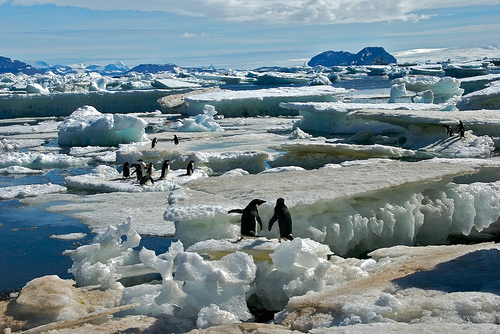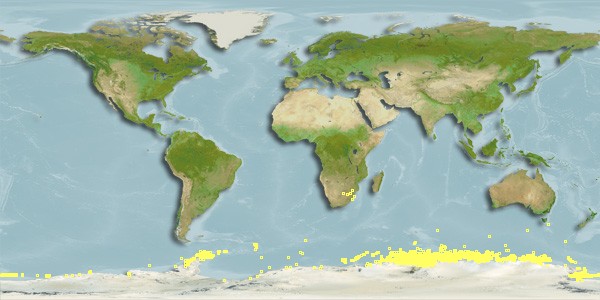Habitat and Geography
Antarctica is one of the few places in the
world that organisms can still be observed in their natural
habitat, unmodified by humans. The data collected from
these observations is thought to show human and natural impacts
on the marine ecosystem.
ecosystem.
Pygoscelis adeliae
is able to live in extremely low temperatures; this species is
only found in the Antarctic region and the surrounding area, but
have no specific home range nor defend a territory outside of
their nest site.

Krill is
Adélie penguins’
main food source
and
the
Adélie
species tends to follow the food.
Krill feed on plankton, which lives underneath ice.
This explains the penguins
migration near the large coastal ice platforms, but during
*breeding season they migrate to warmer locations that provide
them with ice-free terrain to build their nests on and easy
access to open waters for food.
*breeding range:
Antarctica, South Shetlands, South Orkneys, Bouvet, Ballenly and
Peter Island